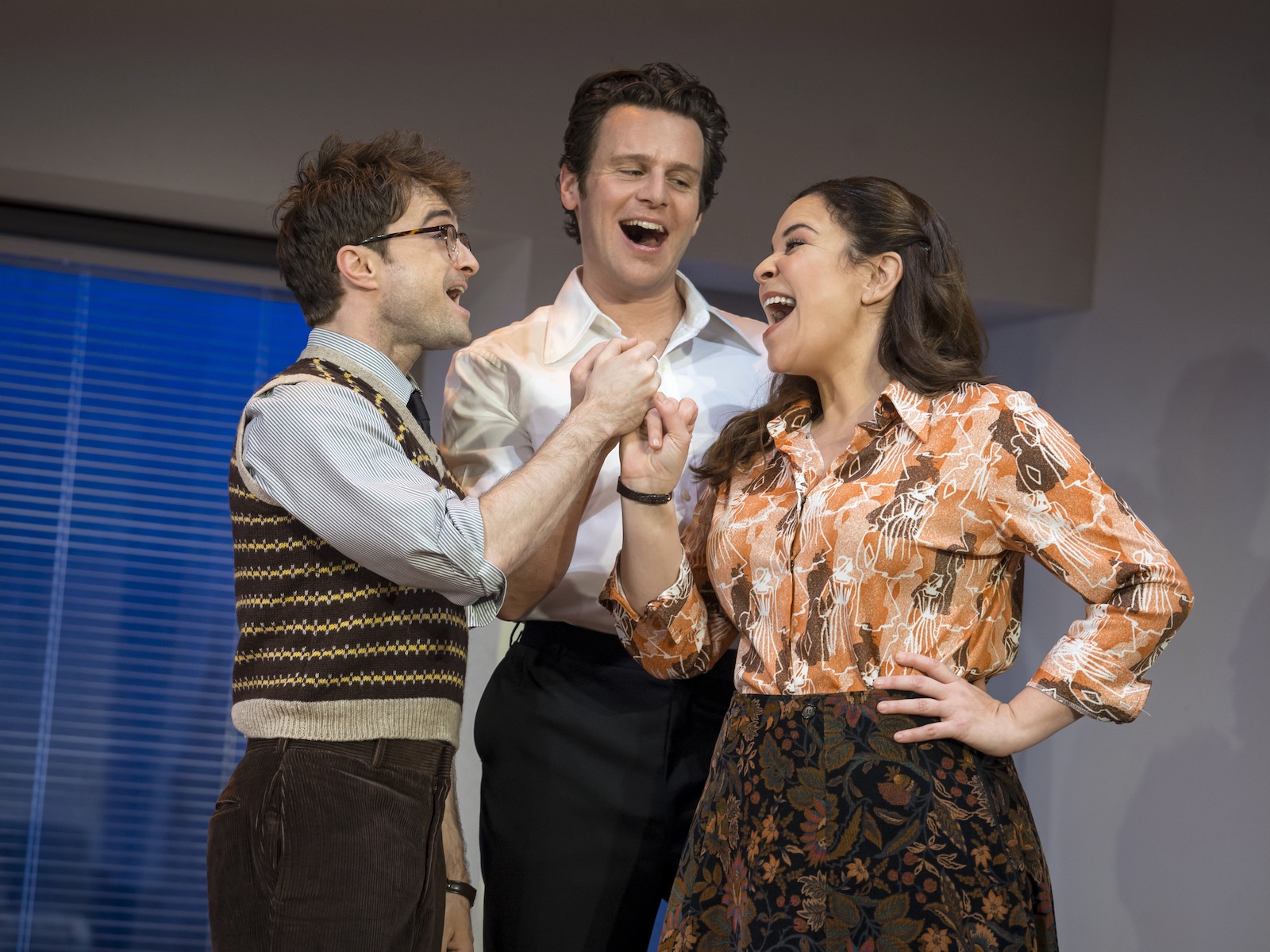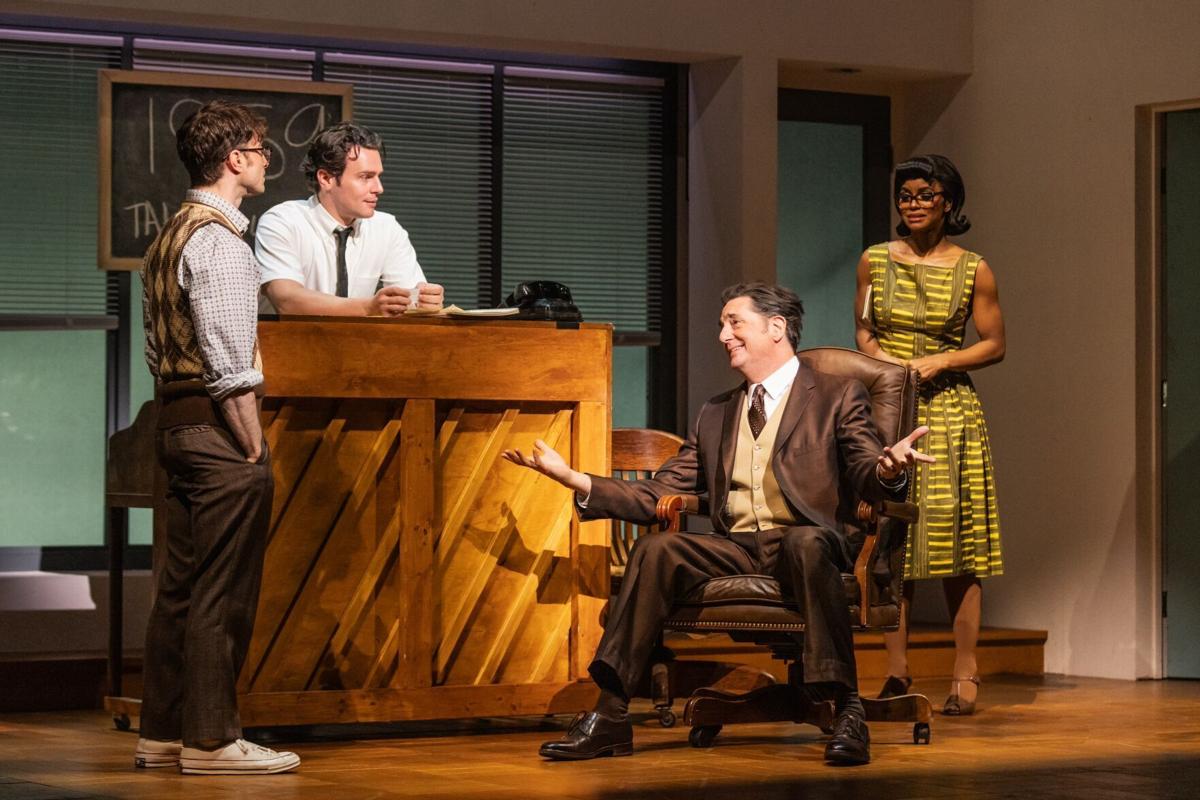Song Analysis
Merrily We Roll Along is a complex and sophisticated song that showcases the artistry of Stephen Sondheim. Its structure, melody, and harmony are all carefully crafted to create an emotional and meaningful experience for the listener.
The song is in a ternary (ABA) form, with a contrasting middle section (B). The A section is in the key of D major and features a lilting, waltz-like melody. The B section is in the key of E minor and has a more somber and reflective tone. The song returns to the A section for the final verse, which ends with a triumphant and uplifting coda.
Musical Devices
Sondheim makes use of a variety of musical devices to create the song’s distinctive sound and mood. The use of syncopation and cross-rhythms adds a sense of energy and vitality to the music. The dynamics are carefully controlled, with the volume and intensity of the music fluctuating to match the emotional content of the lyrics.
Emotional Impact
The music of Merrily We Roll Along is both beautiful and emotionally evocative. The lilting melody and waltz-like rhythm create a sense of nostalgia and longing, while the contrasting middle section provides a moment of reflection and introspection. The song’s triumphant coda leaves the listener with a sense of hope and optimism.
Lyrical Interpretation: Merrily We Roll Along

Merrily We Roll Along’s lyrics are a complex tapestry of themes, motifs, and symbols that explore the complexities of life, relationships, and the passage of time.
The song’s narrative arc follows the story of a group of friends as they navigate the challenges and triumphs of life, from their youthful idealism to their eventual disillusionment and regret.
Themes
Time and its Effects: The song’s title, “Merrily We Roll Along,” suggests the relentless passage of time and its impact on human lives. The lyrics explore how time can both bring joy and sorrow, and how it can shape our perspectives and relationships.
The Power of Memory: The song also explores the power of memory, both as a source of comfort and a source of pain. The characters’ memories of their past shape their present and future, and they are constantly haunted by the choices they have made.
The Importance of Relationships: Relationships are a central theme in the song. The characters’ relationships with each other are complex and ever-changing, and they play a significant role in shaping their lives.
Motifs
The River: The river is a recurring motif in the song. It symbolizes the passage of time and the constant flow of life. The characters often gather by the river to reflect on their past and to contemplate their future.
The Carousel: The carousel is another recurring motif in the song. It symbolizes the cyclical nature of life, and how we often find ourselves repeating the same mistakes.
Figurative Language
The song’s lyrics are rich in figurative language, which helps to convey the song’s themes and motifs. Some of the most notable examples of figurative language include:
- Metaphor: “Merrily we roll along, like a song of old” compares the passage of time to a song, suggesting that life is both beautiful and fleeting.
- Simile: “Time is a thief, he steals away our youth” compares time to a thief, suggesting that time can rob us of our vitality and innocence.
- Personification: “The river flows, it never stops” gives the river human qualities, suggesting that time is a powerful and relentless force.
Historical and Cultural Context

The origins of “Merrily We Roll Along” can be traced back to the early 1900s, when it was a popular folk song among American college students. The song’s lyrics were written by Charles K. Harris in 1899, and the music was composed by Albert Von Tilzer in 1905.
The song’s popularity grew rapidly, and it soon became a favorite of vaudeville performers and Tin Pan Alley songwriters. In 1934, the song was featured in the Broadway musical “Merrily We Roll Along,” which starred Fred Astaire and Ginger Rogers. The musical was a critical and commercial success, and it helped to popularize the song even further.
Cultural and Social Influences
The song’s lyrics reflect the optimism and exuberance of the early 1900s. The song’s title is a metaphor for the journey of life, and the lyrics celebrate the joys of friendship, love, and adventure.
The song’s popularity during the Great Depression is a testament to its ability to provide comfort and hope during difficult times. The song’s message of perseverance and resilience resonated with people who were struggling to make ends meet.
Impact on Popular Culture, Merrily we roll along
Merrily We Roll Along has been recorded by numerous artists over the years, including Frank Sinatra, Bing Crosby, and Ella Fitzgerald. The song has also been featured in several films and television shows, including “The Wizard of Oz” and “The Simpsons.”
The song’s popularity continues to this day, and it is still a favorite of singers and audiences alike. The song’s message of hope and optimism is timeless, and it continues to inspire people around the world.